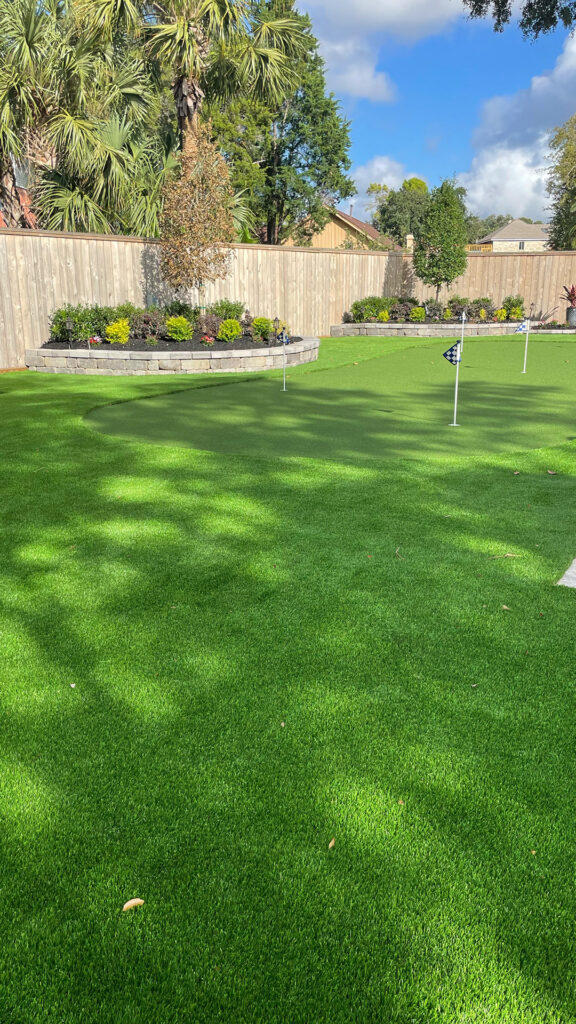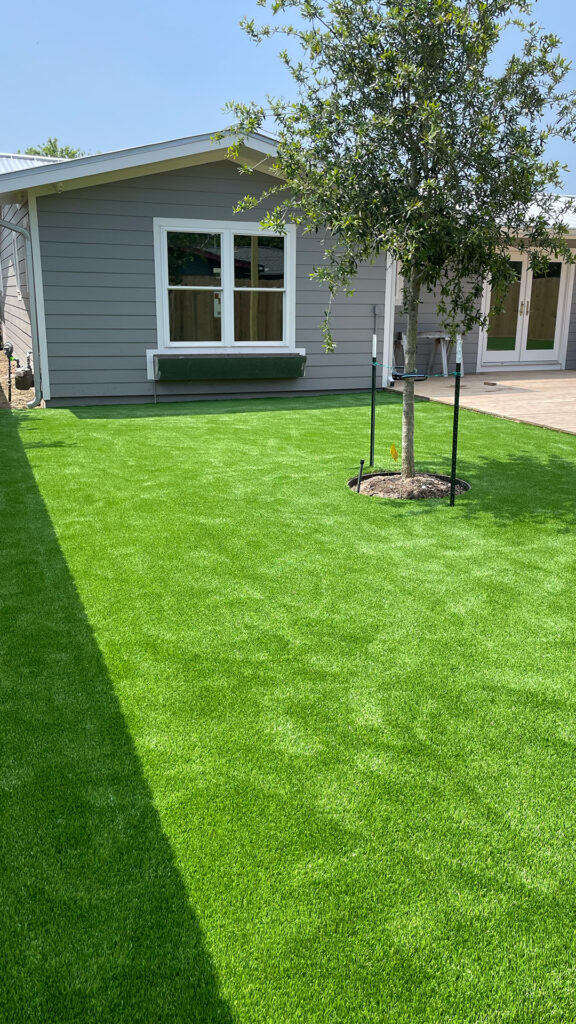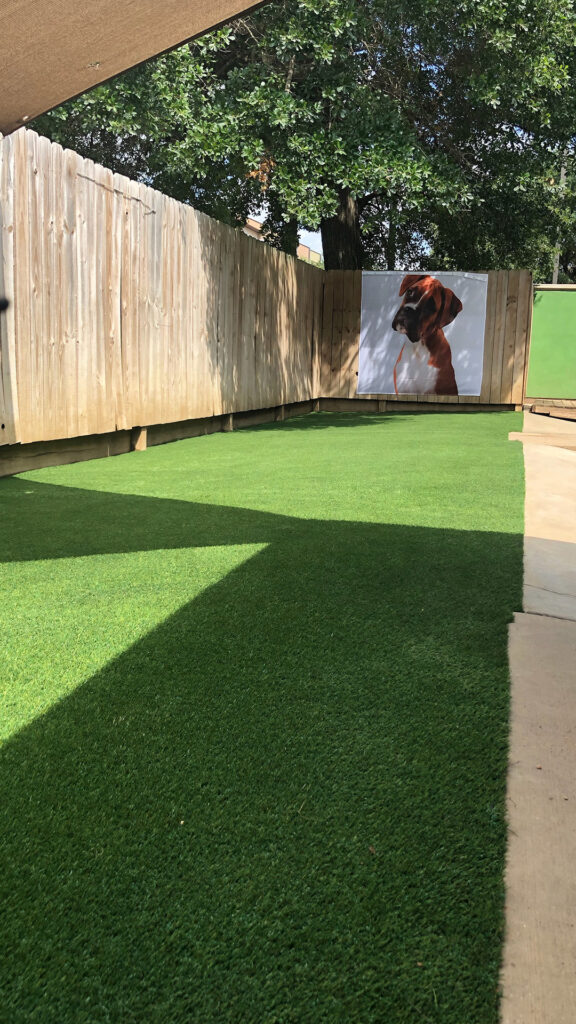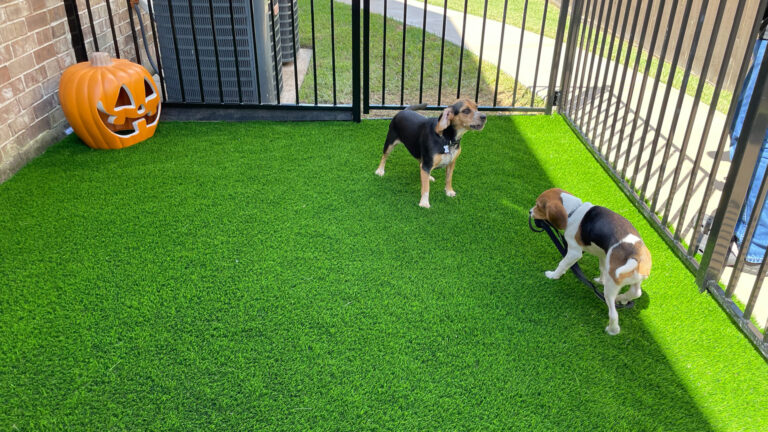The Green Revolution: How Turf is Transforming Texas Landscapes
In the scorching heat of the Lone Star State, a green revolution is underway. Texas landscapes are being transformed by the power of artificial grass, bringing vibrant, lush greenery to previously dry and barren spaces. This revolution is not just a visual transformation but a significant step towards sustainable living and environmental consciousness. Gone are the days of water-guzzling lawns that require constant maintenance and care. Today, innovative techniques and eco-friendly materials are paving the way for low-maintenance, water-efficient turf solutions.
With the increasing emphasis on water conservation and the desire for beautiful outdoor spaces, Texans are turning to artificial turf as the ultimate landscaping solution. It not only provides a year-round green oasis but also helps save water, time, and money. From residential yards to commercial developments, artificial turf is replacing traditional lawns in Texas , proving to be a game-changer in the realm of landscaping.
Join us as we explore the green revolution and uncover the wonders of artificial turf in transforming Texas landscapes. Discover how this sustainable alternative is revolutionizing outdoor spaces, providing a breath of fresh air to the state’s drought-prone regions. Get ready to be amazed by the power of turf and its transformative impact on the way we live and enjoy the great outdoors.




The importance of sustainable Texas landscapes
In the scorching heat of the Lone Star State, a green revolution is underway. Texas landscapes are being transformed by the power of turf, bringing vibrant, lush greenery to previously dry and barren spaces. This revolution is not just a visual transformation but a significant step towards sustainable living and environmental consciousness. Gone are the days of water-guzzling lawns that require constant maintenance and care. Today, innovative techniques and eco-friendly materials are paving the way for low-maintenance, water-efficient turf solutions.
With the increasing emphasis on water conservation and the desire for beautiful outdoor spaces, Texans are turning to turf as the ultimate landscaping solution. It not only provides a year-round green oasis but also helps save water, time, and money. From residential yards to commercial developments, turf is replacing traditional lawns, proving to be a game-changer in the realm of landscaping.
Join us as we explore the green revolution and uncover the wonders of turf in transforming Texas landscapes. Discover how this sustainable alternative is revolutionizing outdoor spaces, providing a breath of fresh air to the state’s drought-prone regions. Get ready to be amazed by the power of turf and its transformative impact on the way we live and enjoy the great outdoors.
Benefits of using turf in Texas landscapes
Sustainable landscaping has become an essential aspect of responsible land management. As water resources become scarcer and environmental concerns intensify, it is crucial to adopt practices that minimize water usage while maximizing the aesthetic appeal of outdoor spaces. Turf offers a sustainable solution by reducing water consumption and promoting a healthier environment.
One of the key benefits of sustainable landscaping is its positive impact on water conservation. Traditional lawns require significant amounts of water to stay green, especially in arid regions like Texas. This high water demand strains local water supplies and contributes to the depletion of natural resources. By using turf, which requires less water to thrive, homeowners and property managers can significantly reduce their water consumption and make a positive contribution to water conservation efforts.
Furthermore, sustainable landscaping also plays a vital role in reducing pollution and improving air quality. Turf helps to filter pollutants, such as dust and allergens, from the air, creating a healthier living environment for both humans and wildlife. Additionally, the dense root system of turf helps prevent soil erosion and reduces the amount of sediment entering nearby water bodies, protecting aquatic ecosystems.
Turfgrass varieties suitable for Texas climates
The use of turf in Texas landscapes offers numerous benefits that go beyond water conservation. Firstly, turf provides a visually stunning backdrop that enhances the overall aesthetic appeal of any outdoor space. Whether it’s a residential yard, a public park, or a commercial development, the lush green color and soft texture of turf create an inviting atmosphere that is both visually appealing and comfortable to walk on.
Secondly, turf provides a practical solution for areas that are difficult to maintain. Traditional lawns often require extensive care, including mowing, fertilizing, and weed control. In contrast, turf requires minimal maintenance, freeing up time and resources for other landscaping activities. This low-maintenance aspect makes turf an ideal choice for busy homeowners or commercial properties that need to maintain a pristine appearance without investing significant time and effort.
Additionally, turf offers versatility in design and functionality. It can be used to create various outdoor living spaces, such as play areas, sports fields, or entertainment zones. Its durability and resilience make it suitable for high-traffic areas, ensuring that the landscape remains beautiful and functional even with frequent use. Furthermore, turf acts as a natural cooling agent, reducing surface temperatures and creating a more comfortable environment for outdoor activities, especially during the hot Texas summers.
Installing and maintaining turf in Texas
When it comes to choosing the right artificial grass for Texas landscapes, it’s essential to consider the unique climate conditions and specific requirements of the region. Texas experiences a range of climates, from the arid west to the humid eastern regions, each posing different challenges for turfgrass growth and maintenance.
For the arid western part of the state, warm-season grasses like Bermuda grass and Buffalo grass are popular choices. These grasses are drought-tolerant and can withstand high temperatures and low water availability. In contrast, the humid eastern regions of Texas require grasses that are more resistant to disease and can handle higher moisture levels. St. Augustine grass and Zoysia grass are commonly used in these areas due to their ability to thrive in humid conditions.
It’s important to consult with local landscaping experts or turfgrass specialists to determine the most suitable turfgrass variety for specific regions within Texas. Factors such as soil type, sun exposure, and intended use of the turf should also be taken into consideration to ensure optimal performance and long-term success. At Artificial Grass TX we can help you to make an informed decision. Schedule your free professional consultation at contact us.
Water conservation and turfgrass management
Proper installation and maintenance are crucial to the success of any turf project. In Texas, where extreme weather conditions and limited water resources pose challenges, it becomes even more important to follow best practices to ensure the longevity and sustainability of turf.
When installing turf, it’s essential to prepare the soil adequately. This involves removing weeds and debris, loosening compacted soil, and adding organic matter to improve drainage and fertility. Proper irrigation systems should be installed to ensure efficient water distribution, taking into account the specific water needs of the chosen turfgrass variety.
Regular maintenance is key to keeping turf healthy and vibrant. This includes regular mowing at the appropriate height, proper fertilization to ensure adequate nutrient levels, and regular watering based on the specific water requirements of the turfgrass variety. It’s also important to address any pest or disease issues promptly to prevent damage to the turf.
Challenges and misconceptions about turfgrass
Water conservation is a top priority in Texas, where droughts are a recurring challenge. Turfgrass management techniques that promote water efficiency are essential to ensure that turf landscapes can thrive while minimizing water usage.
One of the key strategies for water conservation is proper irrigation management. This involves using smart irrigation systems that adjust watering schedules based on weather conditions and specific turfgrass needs. Additionally, techniques such as deep watering and cycle-soaking can help promote deep root growth, reducing the frequency of watering.
Another effective water conservation practice is the use of drought-tolerant turfgrass varieties. These grasses are specifically bred to require less water while maintaining their beauty and functionality. By selecting the right turfgrass variety and implementing water-efficient irrigation practices, homeowners and property managers can significantly reduce their water consumption without sacrificing the aesthetic appeal of their landscapes.
Case studies: Successful turfgrass transformations in Texas
Despite its numerous benefits, turfgrass faces several challenges and misconceptions that hinder its widespread adoption. One common misconception is that turfgrass is water-intensive and environmentally unfriendly. However, advancements in turf technology, such as the development of drought-tolerant grass varieties and water-efficient irrigation systems, have debunked this notion. Turfgrass can be a sustainable landscaping solution when managed properly.
Another challenge is the initial cost of installing turf. While it may require an upfront investment, the long-term savings in water and maintenance costs often outweigh the initial expenses. Additionally, the increased property value and improved aesthetics that turf provides can offset the initial investment.
Educating the public about the benefits and misconceptions surrounding artificial grass is crucial for its acceptance and adoption. By highlighting the environmental advantages, cost savings, and long-term sustainability of turf, more people can embrace this transformative landscaping solution.
Resources for learning more about sustainable landscaping and turfgrass
Many success stories across Texas demonstrate the transformative power of turfgrass in landscaping. From residential properties to commercial developments, these case studies showcase the positive impact of turf on the environment, aesthetics, and functionality of outdoor spaces.
One such success story is the transformation of a residential backyard in Houston. The homeowner replaced their water-intensive lawn with low-maintenance turfgrass, resulting in significant water savings and a visually appealing landscape. The family now enjoys a green yard year-round without the constant maintenance and high water bills.
In another case, a commercial property in Houston replaced their traditional lawn with artificial grass, creating an inviting and usable space for employees and visitors. The low maintenance requirements of the turf allowed the property to save on maintenance costs while providing a beautiful outdoor area that enhances the overall appeal of the business.
These case studies highlight the versatility and benefits of turfgrass in different settings, inspiring others to consider turf as a sustainable and practical landscaping solution.
Conclusion: Embracing the Green Revolution in Texas landscapes
For those interested in delving deeper into the world of sustainable landscaping and turfgrass, there are various resources available.
Local landscaping associations and extension offices are excellent sources of information, offering workshops, classes, and publications on sustainable landscaping practices and turfgrass management. Online resources, such as blogs and websites dedicated to landscaping and turf, provide valuable insights and tips for creating and maintaining beautiful and sustainable outdoor spaces.
Additionally, consulting with professional landscapers and turfgrass experts can provide personalized guidance and recommendations tailored to specific needs and goals.
Artificial Grass TX, a family owned business with over 20 years in the artificial grass industry. They provide free professional consultation for your Artificial Grass project. Contact us today!


